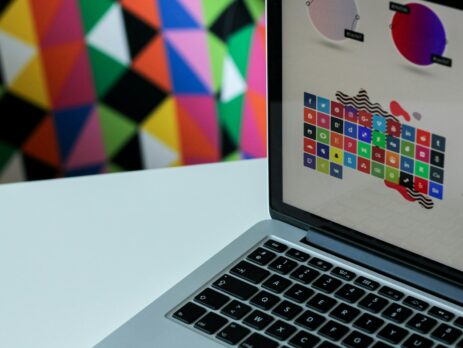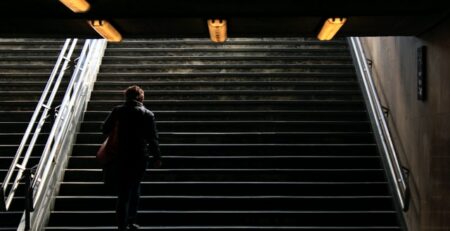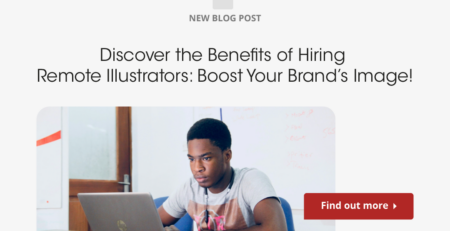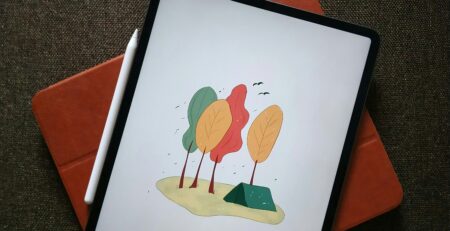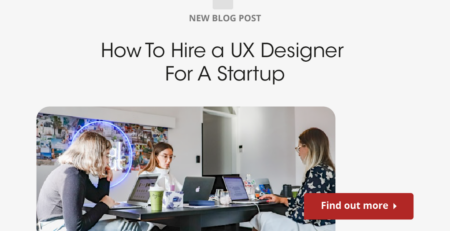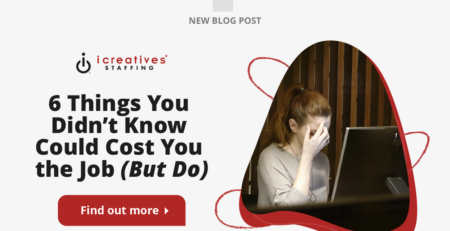Crafting Digital Delight: Hiring UX/UI Designers
In the rapidly evolving digital landscape, the roles of UX (User Experience) and UI (User Interface) designers have become pivotal in crafting applications and websites that not only attract users but also provide them with a seamless and enjoyable experience. Hiring the right UX/UI designer is crucial for any business aiming to enhance its digital presence effectively. This comprehensive guide explores the nuances of hiring skilled UX/UI designers to ensure your digital products are both functional and delightful.
Understanding the distinction between UX and UI design is the first step in the hiring process. While UX design focuses on the overall feel and functionality of the product, UI design is about the aesthetics and the interactive elements that users engage with. Both roles, though distinct, overlap and collaborate extensively to produce a cohesive product experience.
The demand for proficient UX/UI designers has surged as businesses recognize the direct impact of user-centered design on customer satisfaction and retention. This has led to a competitive job market where the best talents are at a premium. Knowing where to find these professionals and what qualifications to look for is key to assembling a top-tier design team.
When it comes to recruitment, the portfolio is often the first document reviewed. A strong portfolio should not only showcase beautiful designs but also demonstrate the designer’s thought process and problem-solving skills. It’s important to look for a variety of projects in a portfolio which indicates versatility and a broad skill set.
Interviewing candidates is another critical step. This stage should delve into the designer’s approach to user research, their familiarity with design tools, and their ability to adapt to different project needs. Behavioral questions can help assess how a candidate collaborates with cross-functional teams and handles feedback and setbacks.
Furthermore, cultural fit cannot be overlooked. A designer’s ability to integrate with your company’s ethos and collaborate with other team members can be just as important as their technical skills. Ensuring alignment in values and work style is essential for long-term success.
Another aspect to consider is the ongoing evolution in the UX/UI field which necessitates a commitment to continuous learning and adaptation. A candidate’s willingness to stay updated with the latest design trends and technologies is a strong indicator of their long-term value to your team.
Compensation is also a critical factor in attracting and retaining top UX/UI talent. Understanding the current market rates, as discussed in how to know if your salary is competitive, can help you craft an attractive offer that matches industry standards.
For companies unsure about committing to a full-time designer or those needing additional support for specific projects, outsourcing or contracting with staffing agencies like icreatives can be an effective solution. This approach provides flexibility and access to a broader talent pool without the overhead associated with permanent hires.
In conclusion, hiring the right UX/UI designer is a multifaceted process that involves understanding the specific needs of your project, scrutinizing technical and creative skills, assessing cultural fit, and offering competitive compensation. With the right approach, you can build a team that will drive your digital products to success.
Most Asked Questions About Hiring UX/UI Designers
- What qualifications should I look for in a UX/UI designer?
- How do I evaluate a UX/UI designer’s portfolio?
- What are the best interview practices for assessing UX/UI designers?
- How can I determine if a UX/UI designer fits well with my team’s culture?
- What are the current salary expectations for UX/UI designers?
- Should I hire a freelancer or a full-time UX/UI designer?
- What are the latest trends in UX/UI design that I should be aware of when hiring?
What qualifications should I look for in a UX/UI designer?
When hiring a UX/UI designer, it’s essential to look for a combination of education, experience, and soft skills. A degree in design, human-computer interaction, or a related field is typically beneficial, but not always necessary. More important is a robust portfolio that showcases a wide range of skills including wireframing, prototyping, user research, and a strong grasp of design tools like Sketch, Adobe XD, and Figma.
Experience is another crucial factor. Depending on the complexity of the projects your company undertakes, you might need someone with a few years of experience in the field. For senior positions, look for candidates who have successfully led projects and can demonstrate strategic thinking in their approach to design challenges.
Soft skills are equally important. Effective communication, problem-solving abilities, and teamwork are essential traits in a designer, as they will need to collaborate with other team members and stakeholders regularly. Additionally, a passion for user-centered design and empathy for users can significantly enhance a designer’s effectiveness.
Technical skills are a must. A competent UX/UI designer should be proficient in design and prototyping software. They should also have a good understanding of front-end development languages such as HTML, CSS, and JavaScript, although they do not need to be experts.
Understanding of UX principles is fundamental. A good designer should have a solid grasp of usability and accessibility standards. They should be able to create designs that are not only visually appealing but also functional and easy to use.
Ability to handle feedback and iterate on designs based on user data and critiques is crucial. Look for candidates who show that they can adapt their designs based on testing and feedback, a key part of the UX design process.
Project management skills can be a bonus, especially for smaller teams where designers might need to oversee projects from conception to implementation. This includes time management, resource allocation, and the ability to keep projects on track.
Finally, cultural fit is vital. A designer should align with your company’s values and work environment. This alignment helps ensure that they can collaborate effectively with other team members and contribute positively to your company’s culture.
For more insights on evaluating potential hires, consider reading interview red flags to avoid common pitfalls in the hiring process.
By focusing on these qualifications, you can better identify candidates who will not only fulfill the technical needs of your projects but also enhance the collaborative dynamics of your design team.

How do I evaluate a UX/UI designer’s portfolio?
Evaluating a UX/UI designer’s portfolio can be one of the most insightful aspects of the hiring process. A well-constructed portfolio should provide a clear insight into the designer’s skills, style, and problem-solving approach. Here are key aspects to consider:
Firstly, look for a clean, user-friendly presentation. A designer’s portfolio is a testament to their aesthetic sense and attention to detail. It should be visually appealing, easy to navigate, and free of clutter.
Diversity of projects is important. A good portfolio includes a variety of work samples that show the designer’s range. Look for different types of projects such as websites, mobile apps, and even UI for physical devices.
Depth of case studies. Instead of just showing final designs, a strong portfolio includes detailed case studies that explain the problem, the process, and the solution. This demonstrates the designer’s strategic thinking and problem-solving process.
Focus on user-centered design. Check for evidence that the designer prioritizes the user experience in their projects. Look for mentions of user research, personas, user testing, and how insights from these activities informed the design decisions.
Technical skills should be evident. Ensure the portfolio shows proficiency in essential design tools and technologies, as mentioned in their resume.
Results and impact. Where possible, a great portfolio will also show the impact of the designer’s work on the business or user experience outcomes. This could be in the form of testimonials, analytics, or other performance indicators.
Personal contribution. In cases where projects were collaborative, the portfolio should clearly state what aspects of the project the designer was directly responsible for.
Innovation and creativity should be visible through the portfolio. Innovative solutions to common design problems can set a candidate apart from their peers.
Finally, the portfolio itself should be up-to-date. A portfolio that includes recent projects suggests that the designer is actively improving and staying current with the latest design trends and technologies.For further guidance on what to look for in a design portfolio, consider reading 10 common UI/UX myths debunked and the truth behind them.

What are the best interview practices for assessing UX/UI designers?
Interviewing UX/UI designers requires a strategic approach to assess both their technical skills and their fit within your team. Here are some effective practices:
Start with a thorough review of the candidate’s portfolio before the interview. This allows you to tailor your questions to their specific experiences and projects.
Use behavioral interview techniques to understand how the candidate has handled real-world situations in the past. Ask about specific challenges they have faced in their projects and how they overcame them.
Incorporate practical tasks, such as a design challenge or a problem-solving exercise relevant to your business. This can help you gauge their creative process and how they apply their skills in a real-world scenario.
Ask about their design process. Understanding how they approach a design project from start to finish can give you insights into their organizational skills and attention to detail.
Discuss the tools and technologies they are proficient in. This is crucial to ensure they can seamlessly integrate with your existing team and projects.
Explore their knowledge of usability and accessibility standards. This is particularly important if your projects need to comply with specific regulatory requirements.
Assess their communication skills. A designer needs to effectively articulate their ideas and also be able to listen and incorporate feedback from various stakeholders.
Understand their ability to work collaboratively. Ask about their experiences working with cross-functional teams, including developers, marketers, and product managers.
Discuss their ongoing learning and professional development. The best designers are those who continually seek to improve their skills and stay updated with industry trends.
Finally, provide an opportunity for the candidate to ask questions. This not only helps them understand the role and your company better but also demonstrates their level of interest and engagement.
For more detailed insights on conducting effective interviews, you might find guide to video interviews a useful resource.
How can I determine if a UX/UI designer fits well with my team’s culture?
Determining if a UX/UI designer fits well with your team’s culture is crucial for ensuring long-term success. Here are some strategies to help you assess cultural fit:
Understand your company’s culture. Define what behaviors, values, and attitudes are important in your organization. This could include collaboration, innovation, flexibility, and respect for diversity.
During the interview, ask questions that reveal the candidate’s values and work ethic. For example, ask them to describe an ideal work environment or how they handle conflict in the workplace.
Consider their interaction style. Pay attention to how they communicate during the interview process. Are they respectful, enthusiastic, and collaborative?
Assess their adaptability. Ask about times they have had to adapt to significant changes or overcome challenges. This can indicate how well they might handle the dynamics of your workplace.
Look for a commitment to teamwork. Since UX/UI design often requires close collaboration, it’s important that the candidate demonstrates a strong ability to work effectively with others.
Review feedback from references. Previous employers and colleagues can provide valuable insights into the candidate’s personality and how they fit into different work environments.
Consider a trial project or probationary period. This can be an effective way to see how the designer integrates with the team and handles actual work scenarios.
Discuss expectations on both sides. Ensure that both the candidate and your company have clear expectations about the role and the company culture.
Observe their questions. A candidate’s questions about your company culture, team dynamics, and values can also provide insights into their priorities and whether they align with your organization.
Finally, trust your instincts. Sometimes, the subtle cues during interactions can give you a gut feeling about whether the candidate will be a good cultural fit.
For more on enhancing team dynamics, consider exploring community in the workplace.
What are the current salary expectations for UX/UI designers?
Understanding the current salary expectations for UX/UI designers is crucial for attracting and retaining top talent. Salaries can vary widely depending on factors such as location, experience, and the specific demands of the role. Here are some key considerations:
Research industry standards. Use salary surveys and industry reports to get an idea of the average compensation for UX/UI designers in your region and sector.
Consider the level of experience. Junior designers typically earn less than senior designers who bring a wealth of experience and leadership skills to the table.
Factor in the cost of living. Salaries in major tech hubs like San Francisco or New York are generally higher due to the higher cost of living in these areas.
Assess the role’s requirements. More specialized roles, such as those requiring expertise in specific UX research methods or advanced prototyping skills, may command higher salaries.
Don’t forget benefits and perks. Many designers value flexible working conditions, opportunities for professional development, and other perks which can be part of the total compensation package.
Be transparent about compensation. Clear communication during the hiring process helps prevent discrepancies and ensures that expectations are aligned.
Consider performance incentives. Offering bonuses or profit-sharing can be a way to attract high-caliber candidates while aligning their goals with the company’s objectives.
Regularly review and adjust salaries. Keeping up with market trends and regularly reviewing compensation packages can help you retain your best designers.
Use salary as a competitive advantage. If you’re able to offer above-average salaries, highlight this in your job postings to attract more candidates.
For more detailed information on competitive salaries, you might find what kind of salaries can you expect as a UX/UI designer helpful.
Should I hire a freelancer or a full-time UX/UI designer?
Deciding whether to hire a freelancer or a full-time UX/UI designer depends on your project’s scope, duration, and budget. Here are some considerations to help you make the decision:
Assess your project needs. For short-term projects or specific tasks, a freelancer might be the most cost-effective and flexible option.
Consider the importance of continuity. For long-term projects or ongoing work, a full-time designer can provide stability and a deeper understanding of your brand and product over time.
Factor in collaboration and integration. Full-time employees are generally more integrated into company processes and culture, which can enhance collaboration.
Analyze cost implications. Freelancers may have higher hourly rates, but you save on benefits and other costs associated with full-time employees.
Consider the management overhead. Managing freelancers, especially multiple ones, can require more coordination and management than with full-time staff.
Look at availability and commitment. Full-time designers are likely to be more available and committed to your company’s success than freelancers who may have multiple clients.
Assess the legal and administrative aspects. Hiring freelancers can be less complicated in terms of contracts and less burdensome in regulatory contexts.
Think about scalability. If you anticipate needing to scale your design team quickly, freelancers can provide a flexible workforce.
Consider the mix of both. Some companies benefit from having both full-time designers for core projects and freelancers for additional expertise or to handle peak loads.
For more insights into the pros and cons of freelancing, see freelance UX designer career path: what you need to know.
What are the latest trends in UX/UI design that I should be aware of when hiring?
Staying informed about the latest trends in UX/UI design can help you identify candidates who are capable of delivering modern and effective user experiences. Here are some current trends:
Increased focus on accessibility and inclusivity. Designers must ensure their products are usable by people with a wide range of abilities and backgrounds.
The rise of voice user interfaces (VUIs). More products are integrating voice commands, requiring designers to understand how to create voice-driven user experiences.
Advancements in AI and machine learning. These technologies are being used to create more personalized user experiences and to automate design tasks.
Virtual Reality (VR) and Augmented Reality (AR). As these technologies become more mainstream, designers need to know how to create immersive UX for these platforms.
Microinteractions. Small animations and effects that enhance the user experience are becoming more popular and can differentiate a product.
Design systems and component libraries. These are becoming essential for maintaining consistency and efficiency in design across large projects and teams.
Minimalism and simplicity. A trend towards cleaner, more minimalist designs that focus on essential features improves usability and aesthetic appeal.
Mobile-first design. With increasing mobile usage, designing for small screens first is becoming a standard approach.
Emphasis on storytelling. Using design to tell a brand’s story can create a deeper connection with users.
For a deeper dive into how these trends are shaping the industry, consider exploring the complete guide to game UX, which touches on several of these modern design approaches.
Conclusion
Hiring the right UX/UI designer is a critical decision that can significantly impact the success of your digital products. By understanding the key qualifications, evaluating portfolios thoroughly, conducting insightful interviews, and considering both cultural fit and salary expectations, you can make informed hiring decisions that will benefit your company in the long run.
Whether you decide to hire a freelancer or a full-time employee, understanding your project needs and the current market conditions will guide you in making the best choice for your team. Additionally, staying updated with the latest trends in UX/UI design will help you identify candidates who are not only skilled but also forward-thinking and capable of bringing innovative ideas to the table.
Remember, the goal of hiring a UX/UI designer should not just be about filling a position but about adding value to your team and enhancing the overall user experience of your products. With the right approach, you can build a team that not only meets but exceeds your expectations.
For further resources on managing and integrating new hires into your team, you might find tips for managing a remote workforce particularly useful, especially in today’s increasingly remote work environment.
Ultimately, the investment in hiring a competent UX/UI designer is an investment in your product’s success. By focusing on quality and fit, you ensure that your digital interfaces are not only functional but truly delightful to use, thereby enhancing user engagement and satisfaction.
For more insights into crafting effective digital experiences and the role of design in modern business, visit icreatives for a wealth of resources and expert guidance.
Thank you for exploring this guide on hiring UX/UI designers. We hope it serves as a valuable tool in your journey to crafting exceptional digital products that stand out in the competitive market.
For networking and professional growth, don’t forget to connect with industry leaders and peers on LinkedIn and share your experiences and insights.
Explore portfolios of top designers on Behance to see cutting-edge design work that can inspire your hiring and design strategies.
In today’s competitive market, finding the right creative and marketing expert can be a challenge. But with icreatives, you’re in experienced hands. With 37 years in staffing and a track record of matching more than 10,000 employees to over 1,000 companies worldwide, we know how to connect you with the best. Plus, you only pay if you hire—there’s no risk, only results.
Ready to find your perfect creative or marketing expert? HIRE WITH ICREATIVES today!

